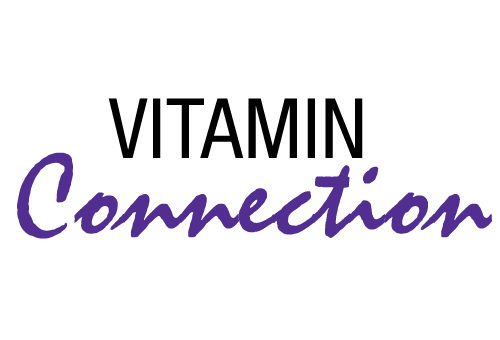Will the public ever realize that it has been misled about cholesterol? Many people in the health food arena and, hopefully, most of our readers are aware of the misleading information about cholesterol. It has been the subject of many interviews in this column over the years such as in the December 2009 issue of WholeFoods Magazine, where we discussed many of the errors in the flawed studies that are used to promote the cholesterol theory in “The Cholesterol Paradigm: The Greatest Health Scam of the Century,” with Sheldon Zerden.
Yet, thanks largely to the vested-interest anti-cholesterol industry, the typical person still clings to the disproven concept that dietary and blood cholesterol are the main risk factors for heart disease. Most researchers in the field and many cardiologists understand that the real culprit behind heart disease is neither dietary cholesterol nor blood cholesterol and that focusing on cholesterol prevents people from taking the very actions that will protect them against heart disease.
My first scientific article dispelling the link between dietary cholesterol and heart disease was printed in 1972 (1) and on the cover of my 1977 book, Supernutrition For Healthy Hearts (2), I wrote, “If anyone can step forward and prove that eating cholesterol causes heart disease, I will donate all of the proceeds from my book to the American Heart Association (AHA).” I then went on a series of national television programs to debate the issue. Needless to say, the research continues to show there is no link except in a small number of genetically abnormal people (3).
What about the highly publicized theory that high blood cholesterol is a 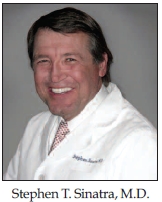 major cause of heart disease? This theory also has been disproven as we have discussed several times in this column. Yet, the disproven theory is still highly promoted by those who gain financially by cholesterolphobia. What does it take to get this so very important correct information to the masses? Now, Stephen T. Sinatra, M.D., F.A.C.C., F.A.C.N., C.N.S., C.B.T., and Jonny Bowden, Ph.D., CNS, take a fresh look at the evidence and inform us about what can be done that really affects the risk of heart disease. Hopefully, the recent book by Drs. Sinatra and Bowden (The Great Cholesterol Myth) will do the job and save many lives.
major cause of heart disease? This theory also has been disproven as we have discussed several times in this column. Yet, the disproven theory is still highly promoted by those who gain financially by cholesterolphobia. What does it take to get this so very important correct information to the masses? Now, Stephen T. Sinatra, M.D., F.A.C.C., F.A.C.N., C.N.S., C.B.T., and Jonny Bowden, Ph.D., CNS, take a fresh look at the evidence and inform us about what can be done that really affects the risk of heart disease. Hopefully, the recent book by Drs. Sinatra and Bowden (The Great Cholesterol Myth) will do the job and save many lives.
Dr. Sinatra needs no introduction to our long-time readers, as he has educated and informed us for many years. In 2004 alone, we discussed new developments in heart nutrition through six installments. We talked about heart nutrition and health starting with the “Twin Pillars” to the “Awesome Foursome.” We have chatted about the real risk factors for heart disease and how to reverse heart disease with metabolic cardiology. Although Dr. Sinatra’s many books are all very informative and “must reads,” my favorite Dr. Sinatra book is Reverse Heart Disease Now with Dr. Jim Roberts and Martin Zucker (4).
New readers may want to know that Dr. Sinatra is a board-certified cardiologist, certified bioenergetic psychotherapist, and certified nutrition and anti-aging specialist. He has lectured and facilitated workshops worldwide and has authored several publications and medical periodicals. He has been a featured guest on many national radio and television shows including Fox on Health, The Dr. Oz Show, The 700 Club and The Today Show plus several reports airing on CNN and MSNBC.
Since opening his own private practice in Manchester, CT in 1977, Dr. Sinatra has become well known for his integration of conventional medicine with complementary nutritional and psychological therapies that help heal the heart. He is a fellow in the American College of Cardiology and the American College of Nutrition as well as having served two four-year terms as the chief of cardiology at Manchester Memorial Hospital, where he had previously been director of medical education for 18 years.
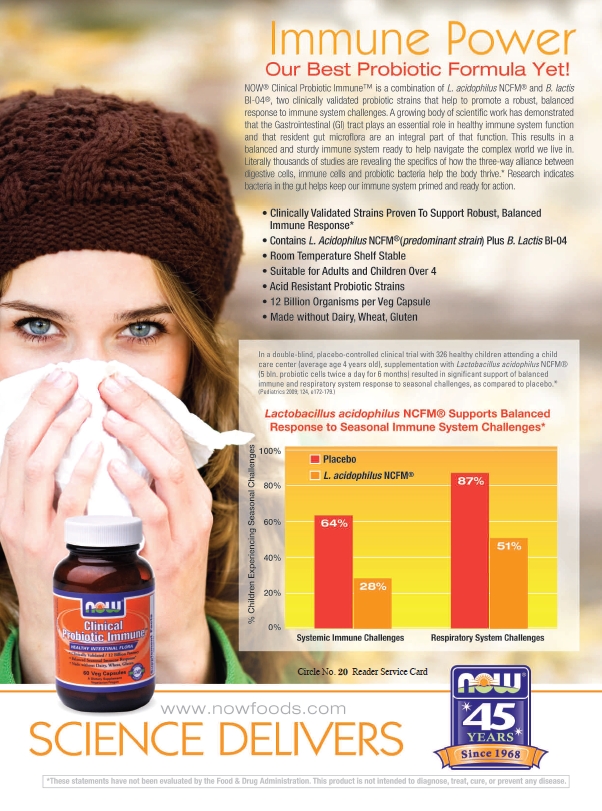 After a 10-year study of bioenergetic psychotherapy, Dr. Sinatra began co-facilitating psychotherapy workshops for his patients and gathering data with before-and-after blood pressure measurements and urine samples to measure stress hormones. As another early hallmark of his practice, he began using coenzyme Q10 (CoQ10) to help treat a wide range of cardiac concerns several years before the conventional medical world would embrace this nutrient. It was during this time that Dr. Sinatra saw first-hand the important contribution that the supplemental use of energy-supplying nutrients, especially CoQ10, made in the lives of his patients.
After a 10-year study of bioenergetic psychotherapy, Dr. Sinatra began co-facilitating psychotherapy workshops for his patients and gathering data with before-and-after blood pressure measurements and urine samples to measure stress hormones. As another early hallmark of his practice, he began using coenzyme Q10 (CoQ10) to help treat a wide range of cardiac concerns several years before the conventional medical world would embrace this nutrient. It was during this time that Dr. Sinatra saw first-hand the important contribution that the supplemental use of energy-supplying nutrients, especially CoQ10, made in the lives of his patients.
Dr. Sinatra has written many books including Lower Your Blood Pressure in Eight Weeks (2003), The Sinatra Solution: Metabolic Cardiology (2005, 2008, 2011) and Reverse Heart Disease Now (2007). His latest books include, The Healing Kitchen (2010), Earthing: The Most Important Health Discovery Ever? (2010) and The Great Cholesterol Myth (2012).
To expand his educational reach beyond his books, Dr. Sinatra began writing a national newsletter in 1995, entitled HeartSense, which became Heart, Health & Nutrition. Dr. Sinatra’s corresponding commercial Web site, www.drsinatra.com, reaches a broad audience and features advice on a wide variety of topics relating to health and healing as well as sharing information on the health products he uses and recommends.
Passwater: Dr. Sinatra, long-time readers of your newsletter, books and this column have long known that you teach cholesterol is not a major factor in heart disease for most people. Now, you have written a book on The Great Cholesterol Myth with Dr. Bowden. Why now?
Sinatra: The book was written to tell the truth about the cholesterol mania sweeping the country. Unfortunately, a new illness has been artificially created called “hypercholesterolemia,” which is creating enormous and needless fear among multiple segments of the population. This is indeed a myth that needs to be dispelled. One of the most common consults I saw in my office were young women in their 30s and 40s who felt they were destined to die of heart disease because their cholesterol was greater than 250. Many of these women were placed on statin drugs and they wanted to come off. Many of them actually went to other doctors before me and were told to reduce their cholesterol.
The idea that high cholesterol causes heart disease is probably one of the biggest lies of the 21st Century. The tragedy is, since we focus so strongly on it as the cardinal risk factor in heart disease, we have gotten off the real cause of heart disease, which is inflammation caused by anything from trans-fats to insecticides, pesticides, radiation, sugar and more. Although I used to be a choirboy for the cholesterol theory in late 80s and early 90s, when I was chief of cardiology, the reversal came abruptly when I read an article in 1993 in the medical literature stating that statin drugs, in addition to killing cholesterol, also lowered the most important nutrient for the heart, CoQ10.
Passwater: Well, you were a CoQ10 and heart disease expert then. How did that article affect you?
Sinatra: At the time, I was actually lecturing 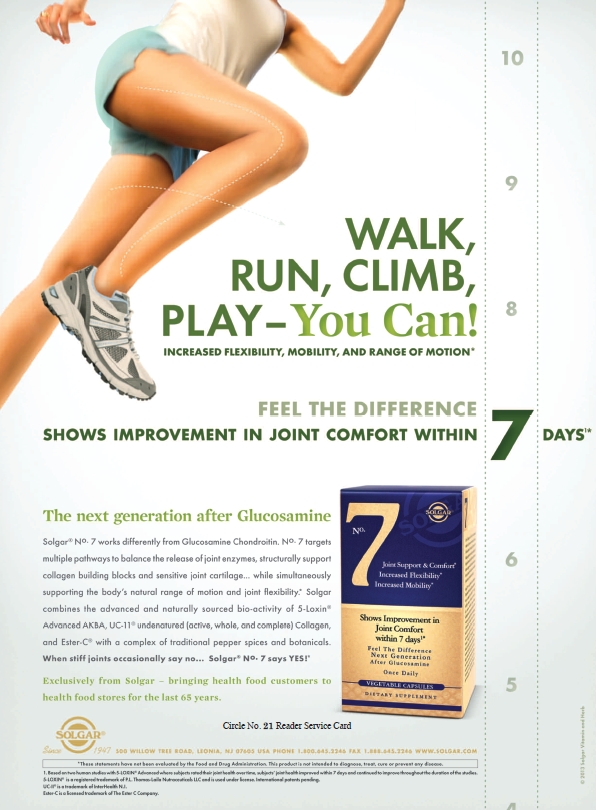 for drug companies on the savior quality of statins, but this article popped the bubble and got me seriously thinking: How could a drug that is supposed to help the heart knock out the most precious nutrient for the heart at the same time? It didn’t make any sense.
for drug companies on the savior quality of statins, but this article popped the bubble and got me seriously thinking: How could a drug that is supposed to help the heart knock out the most precious nutrient for the heart at the same time? It didn’t make any sense.
I immediately stopped lecturing for the drug companies and started to think for myself. For example, I performed thousands of coronary angiograms during my fellowship training and 10 years after getting my certification in cardiology. I remembered many of these cases and was shocked to find normal coronary arteries in people with cholesterols of 285 and above. I was also seeing severe coronary artery disease in those with cholesterols of 150–160. Again, it didn’t make sense, especially with the dogma of cholesterol being the major risk factor for heart disease.
I started to read the statin studies with skepticism and stopped following in the footsteps of the Emperor’s clothes. From 1993 to 2003, I continued to use statins and started to follow the patients’ progress, side effects and other factors. Whenever I prescribed a statin, I always recommended CoQ10 at the same time to avoid deficits in the body.
Then in 2002, the Southern Medical Journal asked me to peer review a heart disease/cholesterol/statin article. Although the article was mainstream, conventional and informative, it lacked total balance. It was a grandstand for cholesterol and heart disease with statins as the savior. I told the reviewers to accept the article because I believed it had merit for practicing physicians. But since the article totally lacked balance, I suggested the journal publish an editorial by someone to address many of the themes.
The journal came back and asked me if I would write the editorial and I did! Honestly, writing that editorial was incredibly time-consuming because I thoroughly investigated all the existing literature on statins, the cholesterol theory of heart disease, dietary considerations and more. I probably spent more time on that editorial (5) than writing one of my books back then, but I learned an enormous amount because all I wanted to do was to be fair and tell the truth.
Passwater: It was an excellent editorial indeed, but I notice the journal and PubMed do not publish the abstract. Perhaps they don’t want to make it easy for researchers to see your conclusions. What did your editorial suggest?
Sinatra: Some of my points were that cholesterol was just a number and not a disease, and that physicians treat patients, not numbers. Treating numbers is not smart medicine. I also pointed out, at that early date, that statins could be a blessing or a curse, depending on how they were used.
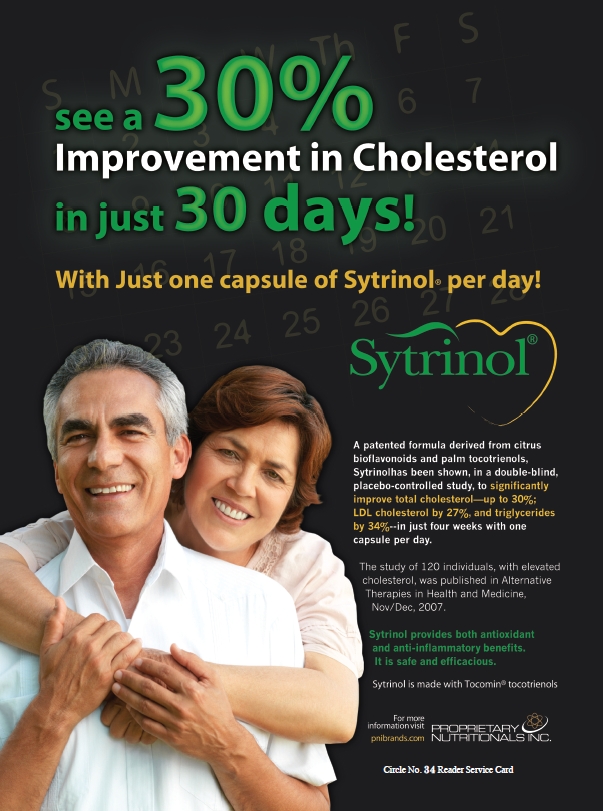 So, I guess The Great Cholesterol Myth was something in the back of my mind for over a decade before its publication. The book represents my journey in searching for the truth and the answer is this: Cholesterol is found at the scene of the crime, but it is not the perpetrator. When we consider all the risk factors involved in coronary disease, in my mind, it’s at the lower end of the spectrum.
So, I guess The Great Cholesterol Myth was something in the back of my mind for over a decade before its publication. The book represents my journey in searching for the truth and the answer is this: Cholesterol is found at the scene of the crime, but it is not the perpetrator. When we consider all the risk factors involved in coronary disease, in my mind, it’s at the lower end of the spectrum.
Remember that cholesterol is only a theory and it is not proven. What is proven, however, is the concept of Lp(a) which is a very small cholesterol-carrying particle with a disulfide bridge (two sulfur atoms joined together in a molecule) that causes enormous inflammation and blood clotting. These small cholesterol particles will enhance inflammation and will accelerate coronary artery disease. The problem is not all cholesterol is the enemy—only the cholesterol carried by specific lipoprotein sub-fractions like Lp(a) (small-particle oxidized LDL) and VDL3 (an inflammatory triglyceride particle) to mention some. The television, the media and even cardiologists believe that cholesterol is the enemy. Nothing is farther from the truth; most cholesterol is your friend.
Passwater: Agreed, and we’ll chat about Lp(a) and other lipoproteins shortly.
Many people do not realize that cholesterol is made in virtually every cell in the body for some very important reasons. Since most cholesterol is our friend, what is the enemy then?
Sinatra: The foe is sugar. That’s the real demon! We need cholesterol to form steroid and sex hormones; form bile acids for proper digestion; lubricate the skin; form neurotransmitters in the brain; stabilize cell membranes; form many components of the immune system; and help form vitamin D3 when sunlight enters the skin. If cholesterol does not become oxidized, who cares?
The real risk factor profiles are elevations of triglycerides, low numbers of functional HDL, higher blood sugar, higher hemoglobin A1C and higher insulin levels. These are attributes of metabolic syndrome, which is an increasing, threatening health malady that is insidiously affecting large numbers of people in our country. The focus on cholesterol is a travesty as it has gotten us away from the real issues of heart disease.
Passwater: Steering people away from cholesterol-containing foods and dietary fats can drive people toward sugar-containing and high simple-carbohydrate diets. Does this unwarranted focus on cholesterol prevent people from taking effective measures to prevent or reverse heart disease?
Sinatra: Absolutely. The Frankenstein mania on cholesterol is the ultimate seduction. Can you imagine if people think they will be okay if they have normal cholesterol? Or, worse yet, that the lower the cholesterol, the better? Let’s face it. Low blood cholesterol levels make us predisposed to infectious diseases like MRSA in children. High cholesterol protects us from infectious disease of the respiratory tree and the gastrointestinal tract.
In the Mr. Fit study, in hundreds of thousands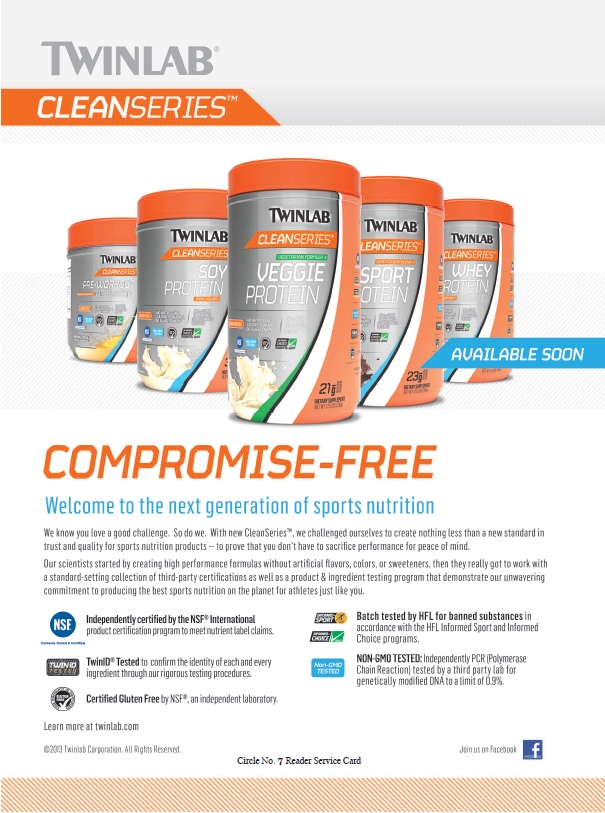 of men, hemorrhagic stroke occurred more in men with blood cholesterol levels less than 180 than those with cholesterol greater than 330.
of men, hemorrhagic stroke occurred more in men with blood cholesterol levels less than 180 than those with cholesterol greater than 330.
If people focus on cholesterol lowering, they can hurt themselves, but worse, they may not be taking effective measures in preventing metabolic syndrome or other inflammatory causes of heart disease. Remember, the most endothelial cell “bad guy” is insulin surges resulting from pure processed carbohydrate, sugar, high-fructose corn syrups and the like. If people focus on cholesterol and fat, they could “miss the boat” and not focus on the real issues at hand.
Passwater: Then, why does conventional medicine keep focusing on cholesterol?
Sinatra: The belief is so entrenched—the conspiracy runs miles deep. Unfortunately, conventional doctors still believe in this nonsense theory and in our book, we start out with the seven-country study and the faulty research by Ancel Keys. This flawed research was followed by more shoddy and manipulated studies. If one-third of cardiologists take statin drugs, the belief is so strong that it is going to take a paradigm change to reverse it and that is what The Great Cholesterol Myth is all about.
Passwater: How is sugar involved?
Sinatra: Inflammation, inflammation, inflammation with sugar at the helm. Sugar is a true danger to the arteries, whereas the widely feared cholesterol is not nearly so. Sugar is directly responsible for a process called glycation, which is just as damaging as free radicals and oxidation. Glycation is the uncontrolled bonding of sugar with proteins that impairs the functioning of the proteins. This process leads to the formation of advanced glycation end-products (AGEs), which are implicated in diseases such as heart disease because AGEs damage the endothelium, fibrinogen and collagen. AGEs also are implicated in Alzheimer’s disease (amyloid proteins are side-products of the reactions progressing to AGEs), cancer (acrylamide and other side-products are released), peripheral neuropathy (the myelin is attacked) and even in other sensory losses such as deafness (due to demyelination). The A1C test is a measure of AGEs. The huge amount of high-fructose corn syrup in modern diets is particularly alarming—it increases insulin resistance and raises triglycerides.
Other considerations that I call the Dirty Dozen in Reverse Heart Disease include trans-fats, high blood pressure, genetic vulnerabilities, radiation, toxic metals, microbes, mitochondrial vulnerability, oxidative stress, ferritin, fibrinogen, homocysteine and C-reactive protein. I’ve already mentioned excess insulin and Lp(a).
Passwater: Yes, you mentioned Lp(a) and other lipoproteins, so now is a good time to review for our readers what lipoproteins are and what they do. Cholesterol is both a steroid and a lipid that is vital for cell membrane stabilization, producing sex hormones and vitamin D among other functions. Most cells can produce cholesterol themselves, but the body finds it more efficient to produce large quantities of cholesterol in the liver and then transport it to other cells. Since cholesterol is fat-like (a lipid), it is insoluble in blood, which is water-based. The body assembles particles containing both proteins and lipids called lipoproteins to transport fats and cholesterol in the blood. Major lipoproteins are classified as high-density lipoproteins (HDL), low-density lipoproteins (LDL), intermediate-density lipoproteins (IDL), very low-density lipoproteins (VLDL) and chylomicrons.
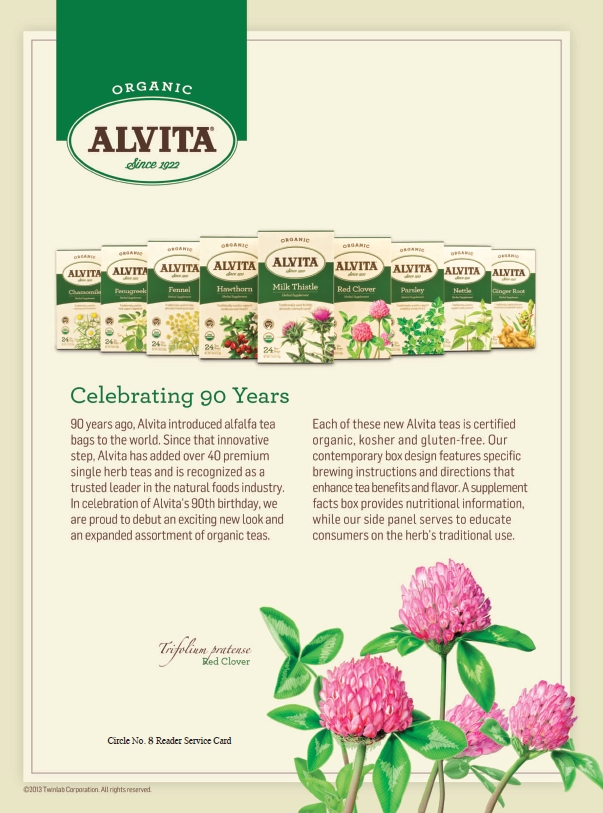 LDL and HDL can carry cholesterol in their lipid interiors while their protein shells enable them to be carried in the bloodstream. LDL carries cholesterol to cells from the liver, while HDL returns unused cholesterol back to the liver. For decades, LDL has been referred to as the “bad cholesterol” and HDL as the “good cholesterol.” However, recent research has found that it is not quite that simple as both LDL and HDL particles come in various sizes, compositions and densities that give them different properties.
LDL and HDL can carry cholesterol in their lipid interiors while their protein shells enable them to be carried in the bloodstream. LDL carries cholesterol to cells from the liver, while HDL returns unused cholesterol back to the liver. For decades, LDL has been referred to as the “bad cholesterol” and HDL as the “good cholesterol.” However, recent research has found that it is not quite that simple as both LDL and HDL particles come in various sizes, compositions and densities that give them different properties.
There are several subclasses of lipoproteins of both LDL and HDL. The smaller, denser LDL lipoproteins are often called LDL pattern B particles whereas the fluffier, less dense LDL particles are often called LDL pattern A particles. The LDL pattern B lipoproteins penetrate easier into the arterial vessel wall and are more easily oxidized and able to become involved in the inflammatory damage within the artery walls than LDL pattern A lipoproteins.
Yet, the public still hears so much about “good cholesterol” and “bad cholesterol.” In our previous discussions, we have focused more on different particle sizes of the cholesterol carriers LDL and HDL. What should our readers know about cholesterol carriers and their particle sizes?
Sinatra: It is true that the dinosaur is the good cholesterol/bad cholesterol that we hear on TV. Look, HDL is essentially good cholesterol, but now we are learning about the possibility of dysfunctional HDL. In the future, we will see more dissection of the HDL particle and subtype it like we are doing with the LDL particle. LDL particles are important because the small particle BB shot LDL is the most inflammatory. Particle B size is worse than particle AB and that is worse than particle A, which is a fluffier, more buoyant type of LDL and is less inflammatory. These new particles tests are getting very sophisticated and I hope the doctors will consider these tests before they make judgments on medications that could seriously impact one’s life.
We have discussed the appropriate blood tests such as VAP and NMR LipoProfile to have a doctor order to measure these important fractions of lipoproteins before and Dr. Bowden and I discuss them in our new book. Additional research about LDL receptors and protein carriers is also becoming more sophisticated as well. The final analysis: cholesterol has a lot of moving parts and is a very poorly understood concept.
Passwater: Dietary fat is also blamed for heart disease. What is the relationship between dietary fat and heart disease?
Sinatra: There are killer fats and healthy fats. Omega-3 essential fatty acids, monounsaturated and saturated fats are fine. As you point out in your recent book with Dr. Jørn Dyerberg (The Missing Wellness Factors—EPA and DHA), the real killer fats are the trans-fats, which are partially hydrogenated or hydrogenated and are found in many canned or boxed processed foods. People need to read labels and get away from the polyunsaturated fats that are the most susceptible to oxidation like canola, corn oil, soybean oil and sunflower oil. Saturated fat is the most resistant to oxidation and coconut is the most preferential saturated fat.
People should just remember that not all fat 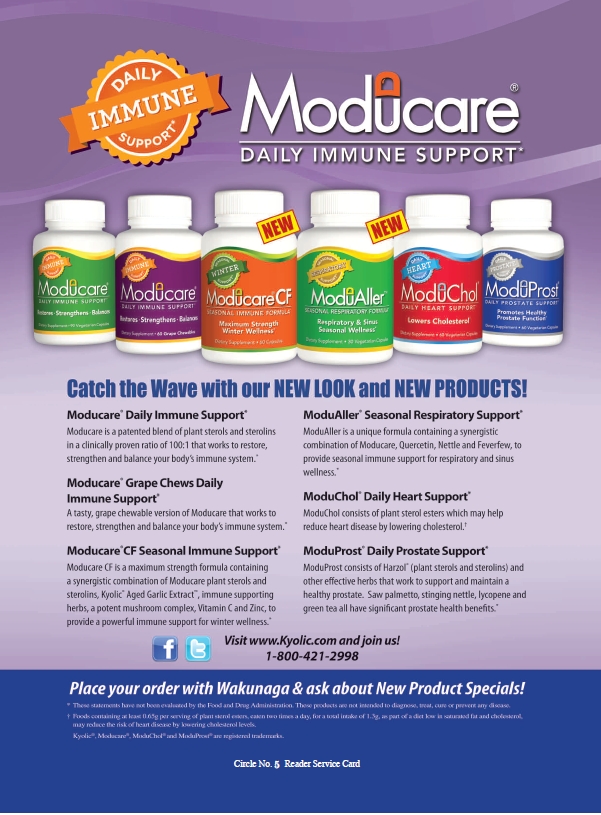 is bad. Unfortunately, many of us throw the baby out with the bath water. For further reading on various fats and the benefits of omega 3s, I refer our readers to your book.
is bad. Unfortunately, many of us throw the baby out with the bath water. For further reading on various fats and the benefits of omega 3s, I refer our readers to your book.
Passwater: Thanks for mentioning our recent book. We do dispel a lot of myths about fats in the book. Many people are surprised about how much they have to unlearn about fats because what they were told was just not true.
Which foods should be avoided and what diet do you recommend?
Sinatra: The taboo foods or the foods that you definitely must decrease are the inflammatory foods including sugars, high-fructose corn syrup, sweets, pastas, cookies, donuts, breads, crackers and almost anything made with white flour or wheat. The diet I recommend is the Pan Asian Mediterranean Diet (PAMP), which chooses foods from the Mediterranean Basin and the Pacific Rim. These foods include wild fish, nuts, fermented soy, fresh fruits and vegetables, olive oil, seaweeds and small amounts of meats that are supportive for cardiovascular health. An 80% plant-based diet with other protein sources coming from free-range meats such as lamb, beef, bison and turkey, with free-range eggs, and occasional organic dairy including cheeses, would be a great place to start.
Passwater: You are not a fan of prescribing statin drugs for all heart patients. Why not?
Sinatra: Statin drugs work great in middle-aged men with existing coronary disease and especially those with low HDL. Statins lower blood cholesterol levels, but they also inhibit the body’s production of CoQ10. That’s a big negative because CoQ10 serves as a central agent in the generation of cellular energy. Without enough of it, health suffers in many ways. I don’t like statins in elderly patients over 75 and the majority of women because I have not seen significant advantages. I do not prescribe statin drugs for children with high cholesterol. They do work in middle-aged men with proven coronary disease as this group has the most to gain and the least to lose.
Remember, statins have pleotrophic effects as they thin the blood and they are also potent anti-inflammatories. I will use a statin in middle-aged men with coronary disease regardless of their cholesterol, but I use them predominately for the pleotrophic effects. The reason why the low HDL is such a risk factor for men is that it predisposes them to thicker blood (hyperviscosity) and it is also involved in immune response. Hyperviscosity syndrome from low HDL is a definite risk factor and statins do have some “magic” in neutralizing this problem.
Passwater: If statins can cause so many serious side effects, is there anything a person can do who is taking statins and is afraid to talk to their doctor about the problem?
Sinatra: Statin drugs are grossly overprescribed and their side effects are grossly under-reported. Side effects include muscle pain, fatigue, memory problems, cognition difficulties, depression, cataracts, liver problems, polyneuropathy, impotence and immune decline. As many as 15–25% of statin users may develop muscle pain, along with weakness, anywhere from within a few weeks to several years after the start of regular usage. Unfortunately, many doctors are either ignorant of the connection or too infatuated with cholesterol-lowering to seriously consider the side effects.
Anyone taking a statin must take a minimum dose of 200 mg of a CoQ10 supplement daily in divided doses to avoid immune system decline, which can manifest itself in any of the statin side effects. Remember that statins are mitochondrial toxins and if a drug is a mitochondrial toxin and also depletes a vital nutrient for mitochondrial function, this can cause the most severe side effects. For example, statins cause cardiomyopathy and diastolic dysfunction and the remedy is a metabolic cardiology approach that includes the use of CoQ10.
Passwater: What are your feelings about the effort of drug companies to expand their statin market to children?
Sinatra: I don’t recommend statins to children. However, I will never say never as I guess if I had a homozygous child with familial hypercholesterolemia who has enormous dysfunction of the LDL receptor, I probably would use a statin as the number of LDL particles probably would be through the roof and many of these particles could be inflammatory. Although this condition is rare, I would not be averse to using a statin as some of these children may need liver transplants to help neutralize this horrific genetic malady.
Passwater: We have followed your research and recommendations on nutritional support to reduce the risk of heart disease for decades, from the Twin Pillars of CoQ10 and L-Carnitine to the Awesome Foursome that added d-ribose and magnesium to the duo of vitamin K2 and fish oil. Does your new book discuss your updated advice on nutritional supplementation?
Sinatra: The new book indeed discusses the Awesome Foursome, omega 3s, and other vital nutrients. I recommend supplements for everyone, but moreover, higher doses for someone with a sick heart. For example, a basic multi-vitamin/mineral combination, CoQ10 and omega-3 essential fatty acids (1–2 grams) should be taken by anyone. For those with a sick heart, I would use the basic foundation program and use at least 200–400 mg of CoQ10, 400-600 mg of magnesium, 5 grams of ribose three times a day, and 2–3 grams of carnitine. Sometimes in sick hearts, I’ll also use hawthorne berry and taurine.
The basis for the Awesome Foursome is to promote both arterial and heart health. As an example, magnesium promotes artery health by relaxing their walls and reducing blood pressure, making it easier for the heart to pump and for the blood to flow more easily. Magnesium also supports energy substrates in the heart that drive the needed enzymatic reactions. Another example is that CoQ10 helps reduce oxidation in LDL particles and is involved in producing energy for the heart to beat. The Awesome Foursome are nutrients that increase the energy storage molecule ATP in the heart, which infuses the heart with energy. Ribose forms the center of the ATP molecule; CoQ10 and carnitine facilitate the turnover of ATP and magnesium, which is involved in 300 enzymatic reactions acts like the glue that holds the process together. Metabolic cardiology supports feeble levels of ATP, which is lacking in hearts violated by pathology. In simple terms, sick hearts leak out ATP and since the body cannot make it back fast enough, targeted nutritional support assists the falling levels of ATP in the body to infuse energy into the heart.
Vitamin K2 was not discussed, but is one nutrient I take every day. Although more research needs to be done on vitamin K2, I’m not going to wait for the verdict to come back on this one as any time you can take calcium out of blood vessels where it doesn’t belong and put it back in bones where it does belong is huge. If I ever do a second edition of The Great Cholesterol Myth, I will elaborate on citrus bergamonte because this is going to be the major breakthrough nutrient for dysfunctional sugar and lipid profiles that many of us have and especially those with metabolic syndrome. This new darling citrus arising from Calabria, Sicily, has really caught my eye.
Passwater: Hmmm. Citrus bergamonte. Both statins and Citrus bergamonte reduce blood cholesterol levels by blocking HMG-CoA (6). Citrus bergamonte is also said to lower blood glucose and triglycerides. There seems to more than one active bioflavonoid in Citrus bergamonte. Why do you like Citrus bergamonte, but not statins?
Sinatra: Citrus bergamonte does everything right. True, it has an effect on HMG-CoA, the enzyme that is needed to make cholesterol, but its effect does not compromise CoQ10 to the degree that statins do. Citrus bergamonte is the trifecta for protection against coronary artery disease: it increases HDL, and lowers LDL and blood glucose. I believe that most cardiologists agree that having a triglyceride to HDL ratio less than two is ideal. In those having an elevated triglyceride to HDL ratio, say 3–5, citrus bergamonte will support getting the ratio into the desired range.
to HDL ratio less than two is ideal. In those having an elevated triglyceride to HDL ratio, say 3–5, citrus bergamonte will support getting the ratio into the desired range.
Passwater: We’ll be hearing more about this, I’m sure. Dr. Sinatra, once again we thank you for chatting with us about your research and your new book. Readers can find The Great Cholesterol Myth (Fair Winds Press, 2012) both online and in book stores. They may also appreciate the wealth of information on your Web site at www.heartmdinstitute.com and they may subscribe to your free online newsletter at www.drsinatra.com. WF
Dr. Richard Passwater is the author of more than 40 books and 500 articles on nutrition. Dr. Passwater has been WholeFoods Magazine’s science editor and author of this column since 1984. More information is available on his Web site, www.drpasswater.com.
References
1. R.A. Passwater, “Dietary Cholesterol: Is it Really Related to Heart Disease,” Amer. Lab. 4 (9) 23–35 (1972); Int. Lab. Jan./Feb. 1973.
2. R.A. Passwater, Supernutrition for Healthy Hearts (Dial Press, 1977).
3. Y. Rong, et al., “Egg Consumption and Risk of Coronary Heart Disease and Stroke: Dose-Response Meta-Analysis Of Prospective Cohort Studies,” BMJ 346, Jan. 7, 2013.
4. S.T. Sinatra, J.C. Roberts and M. Zucker, Reverse Heart Disease Now (Wiley, 2007).
5. S.T. Sinatra, “Is Cholesterol Lowering with Statins the Gold Standard for Treating Patients with Cardiovascular Risk and Disease?” South Med. J. 96 (3), 220–222 (2003).
6. H.P. Life Science, “Bergamonte,” www.herbal-powers.com/herbal_powers_osc/ressum/Bergamot%20Research%20Summary.pdf, accessed Feb. 22, 2013.
Published in WholeFoods Magazine, April 2013

